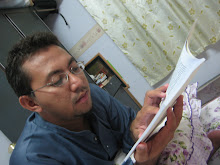
The House is Black filem tunggal arahan Forough Farrokhzad
“There is no shortage of ugliness in the world. If man closed his eyes to it, there would be even more.”
Thus begins the narration in Forough Farrokhzad’s The House is Black (1962), a landmark short film (roughly 20 minutes) by one of Iran’s most venerated modern poets, a woman killed at the age of 32 in a car accident whose writing still permeates Iranian culture. (Her poem “The Wind Will Carry Us” is prominently featured in Abbas Kiarostami’s 1999 film of the same name.) In the 2001 book Close-Up: Iranian Cinema, Hamid Dabashi cites The House is Black as the beginning of an adventurous decade of Iranian filmmaking that would culminate with Dariush Mehrjui’s The Cow in 1969: “[The House is Black] must be considered by far the most significant film of the early 1960s, a film that with its poetic treatment of leprosy anticipated much that was to follow in Iranian cinema of the 1980s and 1990s.” Mohsen Makhmalbaf has called it “the best Iranian film [to have] affected the contemporary Iranian cinema,” and in the liner notes of Facets Video’s new DVD (to be released on February 22), Chris Marker compares the film to Luis BuÒuel’s Las Hurdes.
Farrokhzad’s film may be a “poetic treatment of leprosy,” but it’s also a factual and clear-eyed documentary on the daily routines in a leper colony near Tabriz in northern Iran. By confronting the gruesome effects of the disease on people, it gradually strips away the potential for shock and reveals the human souls beneath the physical symptoms, who are busy persevering, playing, learning, living.
One of the striking counterpoints to the film’s potentially depressing subject, and perhaps the element that gives it the greatest depth, is Farrokhzad’s narration, spoken in hushed, compassionate tones by the director herself. Its evocative language incorporates Koran quotes and Old Testament psalms and oscillates between thanksgiving for the beauty of creation and lamentations for physical suffering.
Farrokhzad’s opening shot is emblematic of her approach–a medium shot of a woman with leprosy with her face partially covered by a veil, the camera slowly and compassionately zooming in to a close-up of her reflection in a mirror. The viewer not only looks at the woman, but shares the woman’s gaze at herself, a mark of the film’s implicit empathy.
And Farrokhzad’s command of the medium continues throughout; though The House is Black is the only film she ever directed (other than a minor commercial), it is brilliantly rhythmic, cutting scenes together thematically and pictorially rather than spatially, and using natural sounds (a squeaky wheel, a bouncing ball, a man walking on crutches) to provide the meter for exceptional montage sequences. Her fluid tracking shots through the colony’s school rooms and prayer halls are graceful and observant, and she artfully punctuates them with everyday details–plants in the sun, drying dishes on a window sill, old shoes and bottles resting together.
Intercut with Farrokhzad’s narration is a male voice (perhaps the film’s producer) who provides objective facts about leprosy and its treatment; it’s contagious and not hereditary, nor is it incurable. “Leprosy goes with poverty.” And the film equally balances empathy with an emphasis on the scientific care needed to heal people as it compiles images of medical treatments and physical therapy.
Running times for the film vary depending on the informational source, but in his informative essay included with the DVD, critic Jonathan Rosenbaum (who helped write the subtitles) cites the official length as 22 minutes and adds, “though it doesn’t appear to be quite complete–one abrupt edit looks like a censor’s cut, and a few stray details visible in some other versions are missing–this is the best version of the film available in North America.” The Facets DVD clocks in at roughly 15 minutes (and includes two Makhmalbaf shorts and a featurette on Farrokhzad), but also appears to have been struck from a PAL source, thus making it about 36 seconds shorter than the film print used.
This is undoubtedly a difficult film to watch, but it’s one that is all the more generous and compelling for being exactly that. Addressing her subject directly with a sensitive but unflinching gaze, Farrokhzad breaks through the repugnant aura that has often haunted victims of the disease and affirms their resilience and human beauty.
--



No comments:
Post a Comment